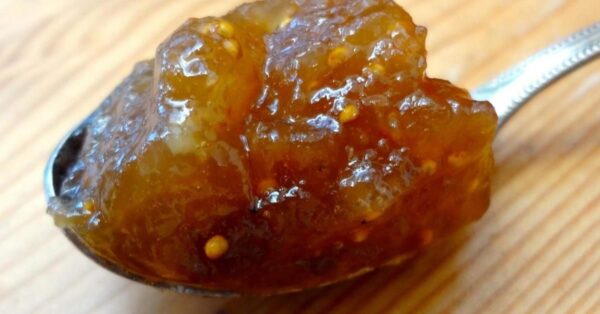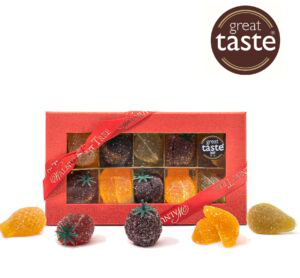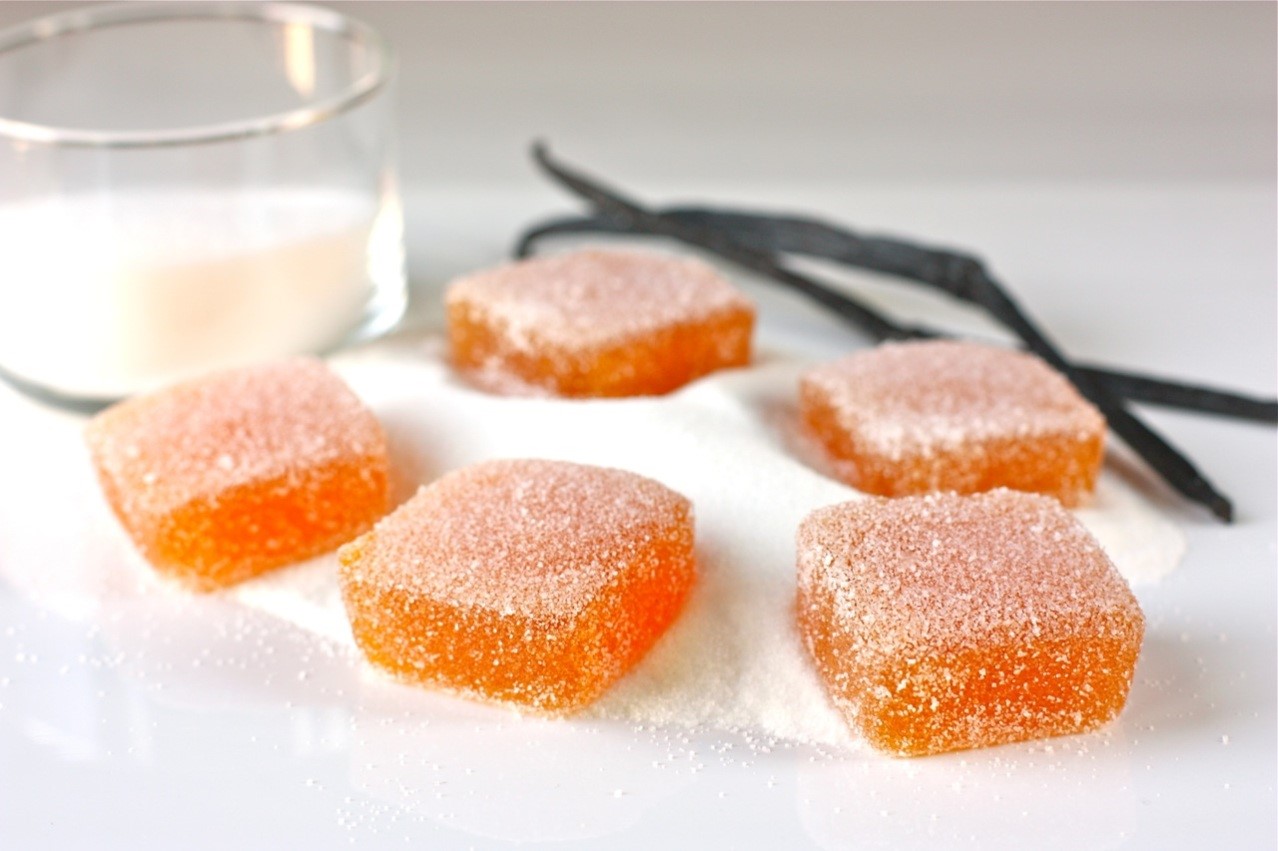Pâte De Fruit: The French Jellies You’ll Absolutely Love
Think pâte, and you’ll probably picture a savoury paste of poultry, beef, or seafood. We spread pâte on French bread or crackers as part of a delicious lunch or meaty snack. But that’s not what pâte meant originally.
In the original French, it refers to any paste, pastry, or dough. Pâte de fruits are somewhere in the middle between a paste and dough – and translates roughly as the ‘candy of nature.’
Once upon a time, you’d find these delightful treats in Roman Antiquity, at the French Royal Court, and in any aristocratic household with a sweet tooth. Now, they’re a popular favourite among candy connoisseurs.
But where does pâte de fruits come from? How are they made? Let’s find out!
Where Do Pâte De Fruits From?
Long before pâte de fruit became a much-favoured delicacy, the Romans ate defrutum. This precursor varied significantly in texture, from syrupy to jam-like. It involved reducing grapes or wine with sugar until a thick syrup formed – not unlike a modern balsamic reduction.
After the Roman collapse, concoctions similar to defrutum continued to be made. It wasn’t until the Middle Ages that something akin to pâte de fruit was invented.
In 10th-century France, local peoples took to candying fruits like apricots to preserve them through winter. These candied fruits were known as confitures seches, essentially mediaeval jams. It was a key source of nutrients and sugar during the harsh winter when food would otherwise be scarce.
Only in the Renaissance period (or the Age of the Enlightenment) did these candied fruits become the candy we know and love today. Chewy bonbons were highly popular during the era. Cooks worked to capture a similar texture – between jam and a gummy – creating the first pâte de fruits.
They were an instant hit. Everyone from the philosopher Voltaire to Napoleon III raved about the culinary delicacy. In fact, they were even featured in the Encyclopédie des Lumières, according to Biscuits et Compaigne.
How are French Jellies made?
Just because they took centuries to be invented doesn’t mean they’re hard to make yourself. Getting the sugar to set just right can be a little tricky. Nonetheless, try this pâte de fruits recipe:
- Puree the Fruit: Begin by pureeing approximately 2 cups of your chosen fruit until smooth. Strain to remove any seeds or skins for a refined texture.
- Measure Ingredients: Weigh the fruit puree to determine the amount of sugar needed – aim for a 1:1 ratio of fruit puree to sugar.
- Combine and Cook: In a heavy-bottomed saucepan, combine the fruit puree with the measured sugar and a tablespoon of lemon juice. The lemon juice adds a bit of tartness and helps set the pâte de fruits.
- Prepare Pectin Mixture: Mix a packet of pectin with a tablespoon of sugar in a small bowl. This step prevents the pectin from clumping when added to the puree.
- Add Pectin: Sprinkle the pectin mixture over the simmering fruit puree, stirring it in gradually.
- Boil to the Right Temperature: Cook the mixture, stirring often, until it reaches the gelling point, usually between 104-106°C (219-223°F).
- Test the Mixture: Perform a gel test by dropping a small amount of the mixture onto a chilled plate; it should firm up quickly.
- Set the Candy: Pour the hot fruit mixture into a parchment-lined tray. Smooth the top with a spatula and let it cool until set, typically for a few hours or overnight.
- Cut and Sugar-Coat: Once set, cut the pâte de fruits into desired shapes and roll the pieces in granulated sugar.
- Serve or Store: Enjoy these gummy delights right away or store them in an airtight container to savour later.

Try Walnut Tree’s Award Winning Pâte De Fruits – French Jellies
Pâte de fruits are not just candies; they’re tiny, edible pieces of art, rich with natural flavours and a history as colourful as their appearance.
If you’re looking to treat yourself or a loved one to a taste of this classic French sweet without the fuss of making it, Walnut Tree has got you covered.

Check out our selection of pâte de fruit boxes, where each piece is a bite of fruit-filled bliss. Made by expert confectioners using only the finest real fruit, they come in five award-winning flavours: strawberry, blackberry, mandarin, pear, and pineapple.
So why wait? Dive into the delicious world of Walnut Tree’s pâte de fruits and enjoy a gourmet experience delivered right to your door.
About Walnut Tree- the finest edible gifts
Great Taste Awards
With Great Taste Awards for nougat, dried fruit, marron glacé, glacé fruit, dark chocolate ginger and pate de fruit. You’ll always be purchasing quality products from Walnut Tree.
Who we supply
Supplied under own brand or white label to prestigious stores, palaces, castles, stately homes, garden centres, delicatessens, farm shops, hamper companies, department stores and gift shops.
Why buy from us?
You’re buying directly from the source and will get excellent value for money. If you’re not happy with your purchase, we’ll refund or replace it. The website is open 24/7, orders despatched within 48 hours.
Our charitable contributions
Walnut Tree supports Future Dreams Breast Cancer Charity with dried fruit for their care packages. www.futuredreams.org.uk
Local areas to our factory
AL1 | AL2 | AL3 | AL9 | AL10 | EN6 | EN5 | EN4 | NW4 | NW7 | NW9 | WD6 | WD7 | WD17 | | WD19 | WD23 | WD24 | WD25 | Aldenham | Barnet | Borehamwood | Brent X | Bushey | Colney Street | Edgware | Elstree | Finchley | Frogmore | Hatfield | Hendon | Hertfordshire | Hertsmere | Leavesden | London Colney | Mill Hill | New Barnet | North London | Potters Bar | Radlett | Shenley | South Mimms | Stanmore | St. Albans | Southgate | Watford | Welham Green | Whetstone | Woodside Park

